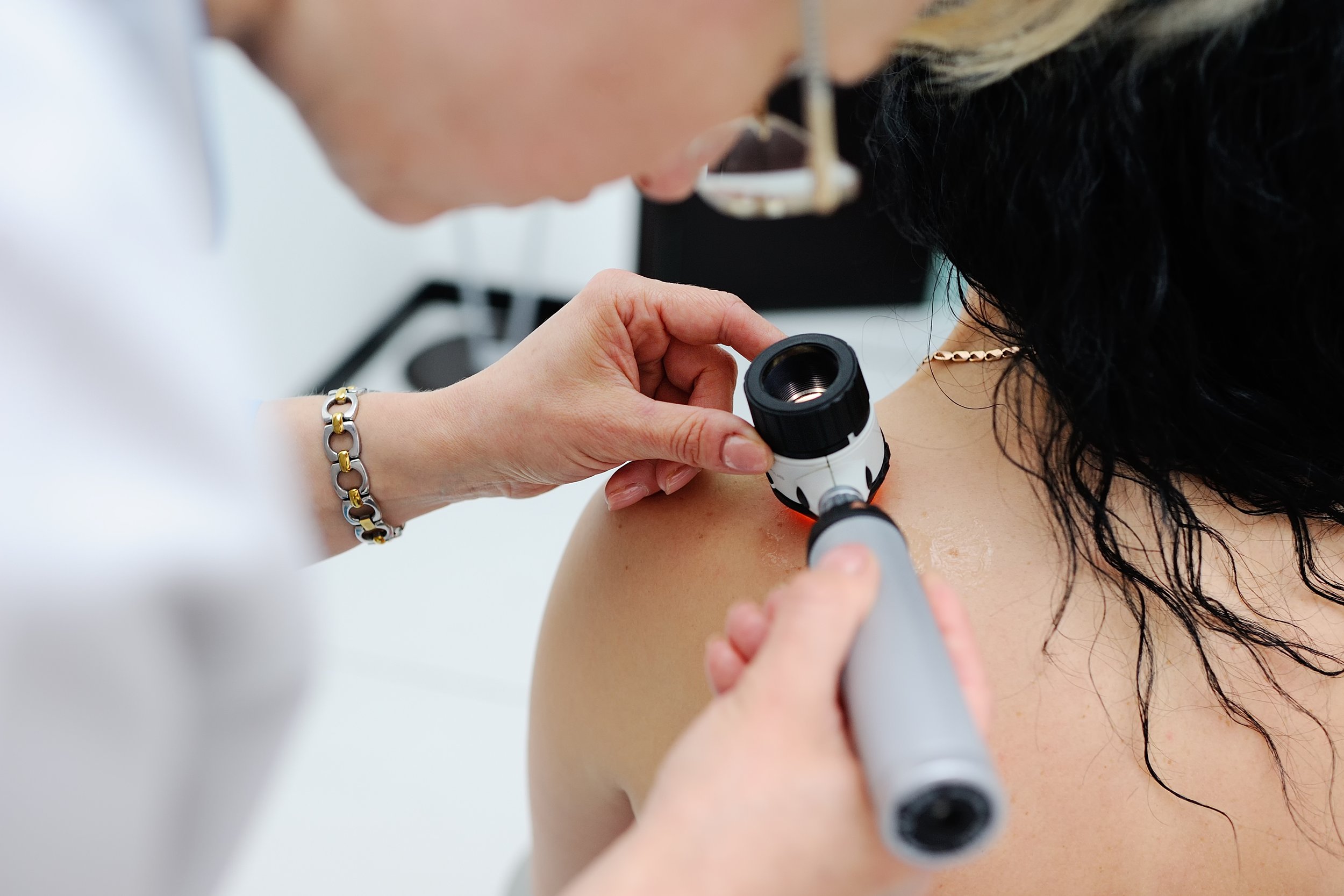
Medical Dermatology
-
Acne
Acne is a common skin condition that may consist of clogged pores (blackheads and whiteheads), pimples, nodules, and/or cysts. There are many treatment options including topical prescription creams and oral prescription medications that can help to clear your skin.
-
Actinic Keratoses
Actinic keratoses (AK’s) are rough scaly spots that are considered pre-cancerous growths. If left untreated, they can progress to become dangerous skin cancers.
-
Eczema
Eczema is a chronic and recurring condition that can appear as red, dry, itchy patches anywhere on the skin. There are several treatment options including prescription topical creams and oral or systemic prescription medications that can help treat your eczema and relieve your symptoms.
-
Rosacea
Rosacea is a common skin condition that may consist of prominent blood vessels and redness, pimples, pustules, nodules, and cysts located on the face. Treatment options may include prescription creams, oral medications, and/or cosmetic elimination of blood vessels using lasers.
-
Dysplastic Nevus
A Dysplastic nevus, or atypical mole, is different from a normal mole. These abnormal moles are irregularly shaped, usually dark in color (but can range in color from pink to dark brown), can be flat or raised and may be located anywhere on the body. Anyone can get an abnormal mole, although the risk is greater if you have used a tanning bed, experienced extensive sun exposure, or if someone in your family has a history of dysplastic nevi or melanoma. A dysplastic nevus is more likely to develop into a melanoma, a life-threatening form of skin cancer. If you have a mole that is changing, growing, or bleeding, you should see a board-certified dermatologist for evaluation.
-
Hyperhidrosis
Hyperhidrosis is a medical condition that causes excessive sweating of the underarms, palms, and/or soles. Treatment options include prescription medications, injection of botulinum toxins, such as Botox or Dysport, or a procedure to decrease sweat glands.
-
Melasma
Melasma is a relatively common, chronic skin condition that appears as brown patches or dark discoloration, most commonly located on the face. The exact cause of melasma is not known, but the condition can be made worse by sun exposure, heat, pregnancy, oral contraceptive pills, and other medications. Treatment may involve topical medications, chemical peels, or light laser treatments.
-
Moles and Warts
Moles are flesh colored or brown to tan skin growths that can be raised or flat and can occur on any area of the body. Most moles are not dangerous, but can be worrisome if they are new, changing, or growing. Changing moles can be the first sign of a melanoma, which is a dangerous and potentially life-threatening type of skin cancer.
Warts are harmless, small bumps caused by a virus and can appear on any area of the skin.
-
Skin Cancer
There are 3 common types of skin cancer: Basal Cell Carcinoma, Squamous Cell Carcinoma, and Melanoma. Anyone can get skin cancer, although the risk is greater if you have a family history of skin cancer. Basal Cell Carcinoma is the most common type of skin cancer and is rarely life-threatening. It is more common in those with repeated, extensive sun exposure. Squamous Cell Carcinoma is the second most common type of skin cancer and may develop from an actinic keratosis (pre-cancer). Malignant melanoma is a serious, life-threatening type of skin cancer that can appear as a new mole or arise from a mole that has been present on your skin for many years. Melanoma can occur on any area of the body, including areas that are not exposed to the sun. Malignant melanoma can be raised or flat and have irregular, uneven borders and irregular colors (brown, pink, blue, white). Early detection and treatment provides the best outcome.
Dr. DiGiorgio operates a Direct Specialty Care practice, where medical insurance is not accepted. Instead, patients pay upfront for personalized dermatology care, ensuring longer visits and transparent pricing, often more cost-effective than traditional insurance-based healthcare. This approach prioritizes patient needs over insurance requirements, guarantees price transparency, and ensures care from Dr. DiGiorgio, a board-certified dermatologist, rather than mid-level providers.
